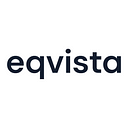The Role of Vesting in Retirement Plans
Vesting plays a significant role in shaping retirement plans, describing the ownership of employer contributions over time. The process significantly influences an individual’s financial security during retirement, whether through immediate, graded, or cliff vesting schedules.
Immediate vesting grants instant ownership, while graded and cliff vesting unroll progressively. Understanding these structures is essential, as a premature departure from employment can lead to forfeiture of unvested contributions.
Vesting’s impact extends to various retirement plans, including 401(k)s, pensions, and IRAs, each with distinct rules.
The age at which full vesting occurs differs from the age for penalty-free withdrawals, necessitating careful consideration. In private-sector pension plans, such as defined benefit or cash balance plans, vesting timelines vary.
Example of How Vesting works with Retirement Plans:
Lumous Innovations offers an employer-sponsored retirement plan with a vesting schedule. The plan includes a 5-year graded vesting schedule, where employees gradually become vested in their employer’s contributions over time.
Vesting Schedule:
Employee Contribution: Employees contribute $5,000 annually to the retirement plan.
Employer Contribution:Employer contributes a matching amount equal to 50% of the employee’s contribution, up to a maximum of $2,500 annually.
Example:
Let’s follow the vesting of an employee, John, who has been with Lumous Innovations for three years.
Now, let’s consider the impact if John decides to leave the company after the third year:
If John leaves in Year 3:
- He is 40% vested in the employer’s contributions.
- The vested amount is $1,000 (40% of $2,500).
This is how vesting in retirement plans determines the portion of employer contributions employees are entitled to retain if they leave the company before becoming fully vested. In this case, John would take $1,000 of the employer’s contributions with him upon leaving, and the remaining unvested amount would be forfeited.
The Role of Vesting in Retirement Planning:
Vesting influences the timing and extent of an individual’s access to employer contributions, highlighting its significance through several key aspects:
- Ownership of Employer Contributions: Vesting establishes the timeline for employees to gain full ownership of employer contributions to retirement plans. Until vested, these contributions may be subject to forfeiture if the individual leaves the company prematurely.
- Incentive for Long-Term Commitment: Vesting incentivizes employees to stay with their employers for an extended period. By gradually vesting contributions over time, employers encourage loyalty and commitment.
- Vesting Schedule Variations: Vesting schedules can take different forms, such as immediate vesting, where employees gain full ownership immediately, or graded and cliff vesting, which involves incremental vesting over a specified period or all at once after a certain duration.
- Impact on Retirement Planning: Understanding the vesting schedule is crucial for effective retirement planning. It influences decisions on when to retire, how to manage withdrawals, and the overall financial strategy leading up to and during retirement.
- Differences Across Retirement Plans: Different types of retirement plans, such as 401(k)s, pensions, IRAs, and others, may have distinct vesting rules. Individuals need to know the specific vesting structures applicable to their retirement accounts.
- Impact on Retirement Age and Withdrawals: Full vesting does not automatically equate to immediate access to funds. Awareness of regulations governing withdrawals is crucial. For instance, traditional 401(k) plans often require reaching the age of 59.5 for penalty-free withdrawals. Understanding these regulations actively aids in planning when and how to access retirement savings.
Types Of Vesting Schedules in Retirement
Retirement plans often follow two vesting schedules:
- Cliff vesting and
- Graded vesting.
Cliff vesting grants full vested rights after a specific service period, like five years. As compared to other Graded it has a shorter vesting period. Also Cliff vesting encourages employee retention and loyalty .
Graded vesting, on the other hand, progressively vests over several years, such as earning 20% after three years and increasing gradually. Same as Cliff vesting this will also promote employees loyalty and commitment to the organization .Each type provides employees a pathway to full benefits based on their tenure.
Strategies For Maximizing Vesting Benefits In Retirement Plans
By making strategic decisions, you can optimize your retirement plan benefits:
- Stay Until Full Vesting: Maximizing vesting benefits often involves remaining with your employer until you reach full vesting. This ensures you benefit from their contributions, especially in plans with graded vesting schedules.
- Understand Vesting Schedule: Familiarize yourself with your retirement plan’s vesting schedule. Knowing the details helps you make informed decisions about your tenure with the employer, whether it’s a cliff vesting or graded vesting arrangement.
- Strategic Job Changes: If considering a job change, evaluate how it impacts your retirement benefits. Staying longer to reach full vesting may be beneficial while switching for better long-term prospects could make sense if full vesting is distant.
- Leverage Matching Contributions: Take advantage of employer matching contributions by contributing enough to receive the maximum match. This boosts your retirement savings and ensures these matching contributions become vested according to the plan’s schedule.
- Explore Alternative Options: Consider alternative retirement options or investment strategies that align with your financial goals and provide flexibility in managing your vested benefits.
Vesting in a Nutshell
In simple terms, vesting signifies full ownership and control over specific investment assets, particularly those associated with retirement savings contributions made by employers.
The underlying principle is rooted in developing employee retention by aligning incentives with long-term commitment. Retirement plan matching contributions, stock options, and stock awards follow vesting schedules, emphasizing the symbiotic relationship between employers and employees in achieving financial goals.
Optimize your vesting schedule with Eqvista!
Simplify the process with Eqvista’s cutting-edge, user-friendly software! Easily allocate electronic shares to founders, investors, and employees, complete with customized vesting plans for each.
Our automated platform streamlines the entire process, saving you valuable time and resources. Sign up today to take advantage of our platform’s efficiency. For further insights — reach out to us directly.
